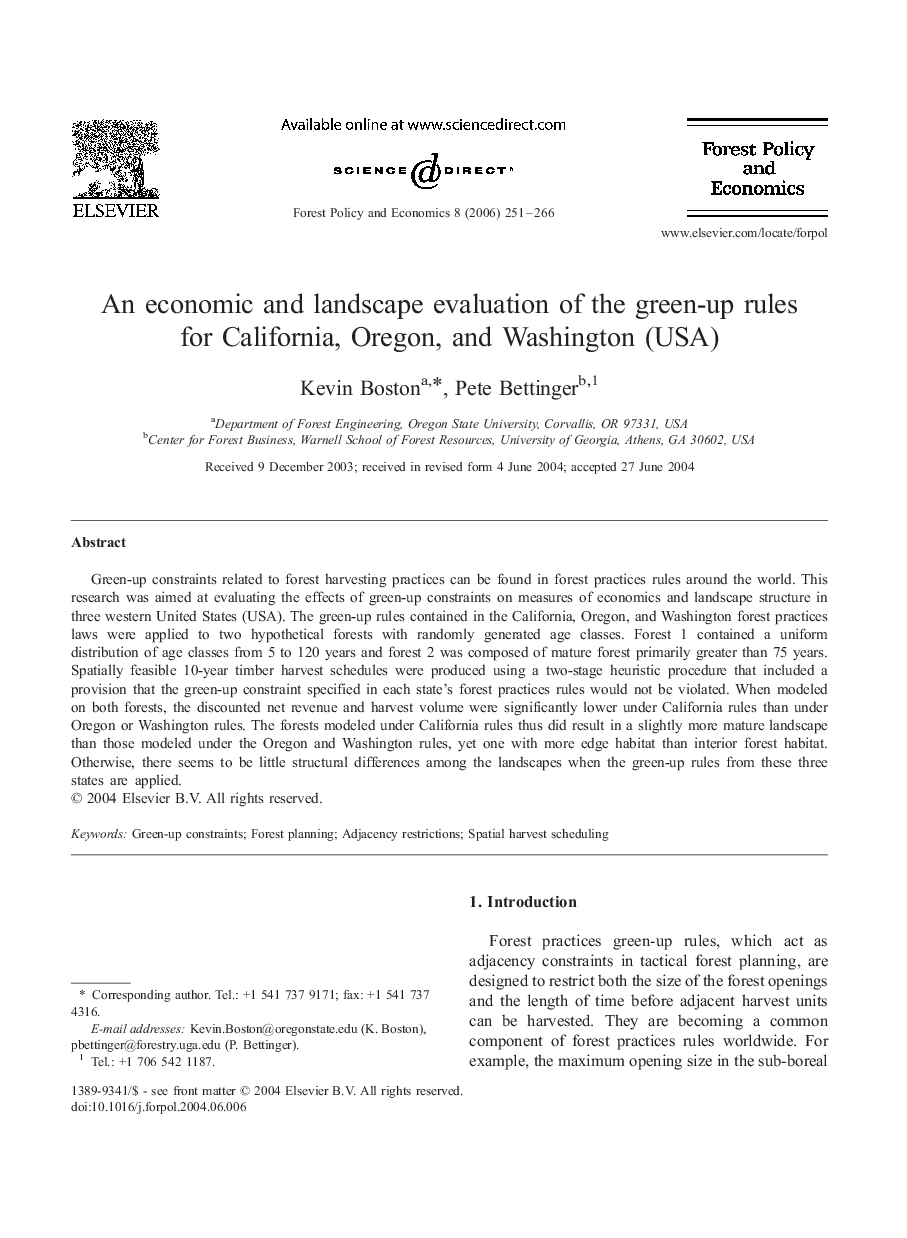| Article ID | Journal | Published Year | Pages | File Type |
|---|---|---|---|---|
| 91506 | Forest Policy and Economics | 2006 | 16 Pages |
Green-up constraints related to forest harvesting practices can be found in forest practices rules around the world. This research was aimed at evaluating the effects of green-up constraints on measures of economics and landscape structure in three western United States (USA). The green-up rules contained in the California, Oregon, and Washington forest practices laws were applied to two hypothetical forests with randomly generated age classes. Forest 1 contained a uniform distribution of age classes from 5 to 120 years and forest 2 was composed of mature forest primarily greater than 75 years. Spatially feasible 10-year timber harvest schedules were produced using a two-stage heuristic procedure that included a provision that the green-up constraint specified in each state's forest practices rules would not be violated. When modeled on both forests, the discounted net revenue and harvest volume were significantly lower under California rules than under Oregon or Washington rules. The forests modeled under California rules thus did result in a slightly more mature landscape than those modeled under the Oregon and Washington rules, yet one with more edge habitat than interior forest habitat. Otherwise, there seems to be little structural differences among the landscapes when the green-up rules from these three states are applied.
